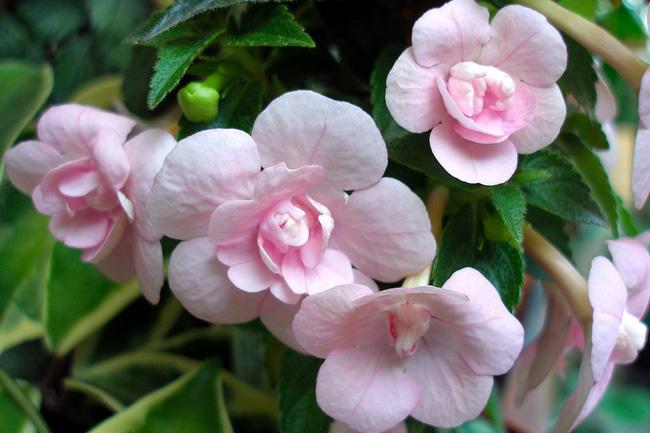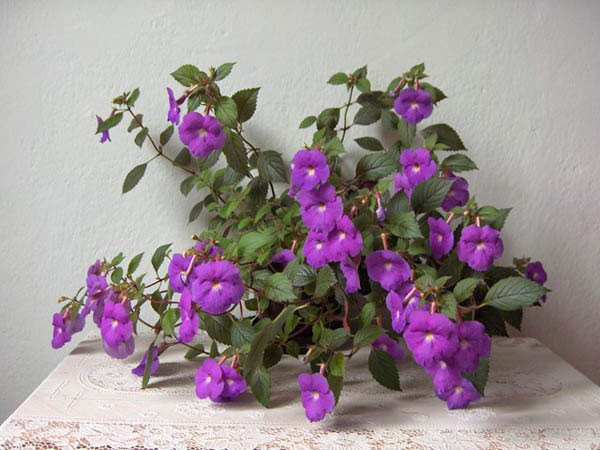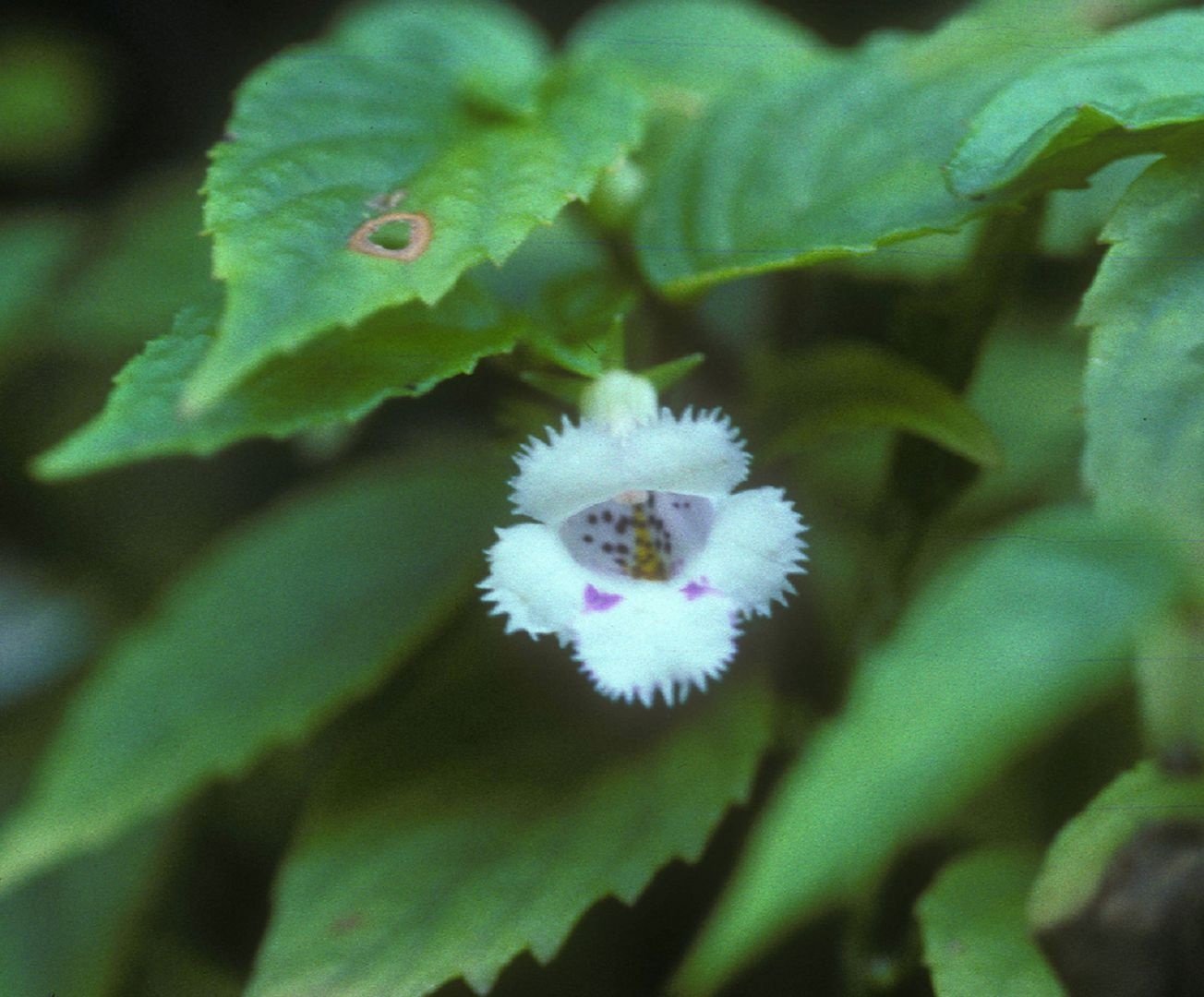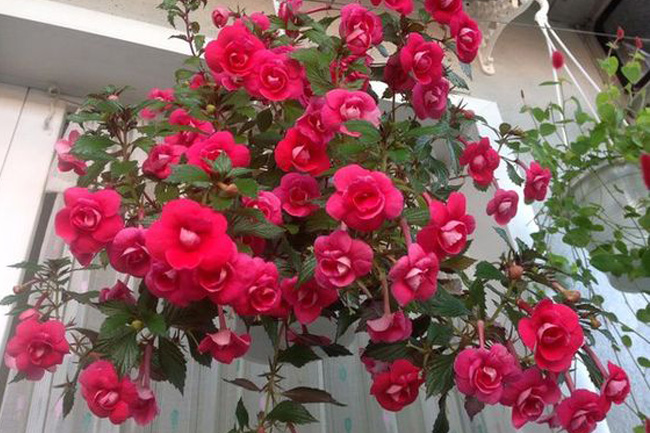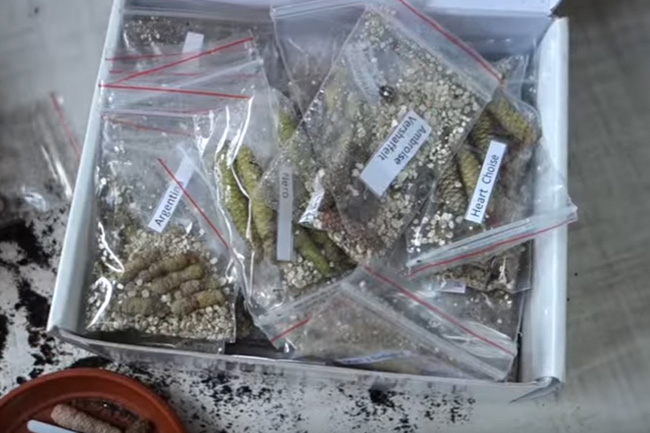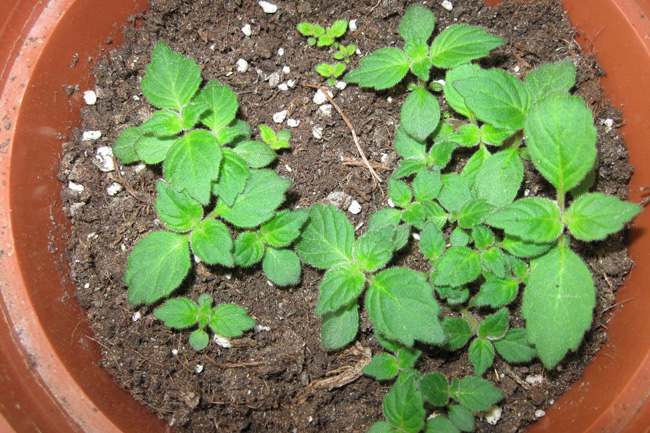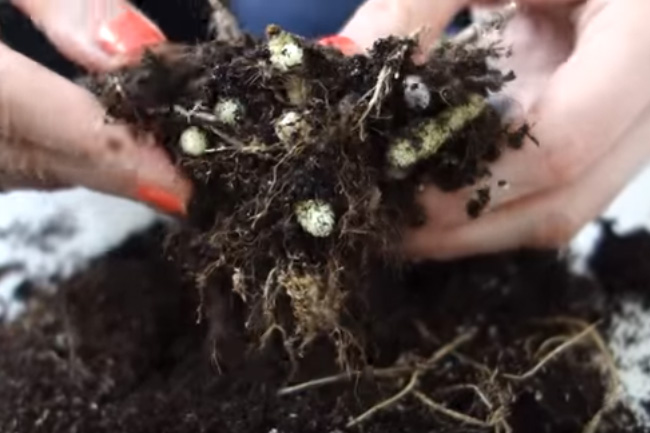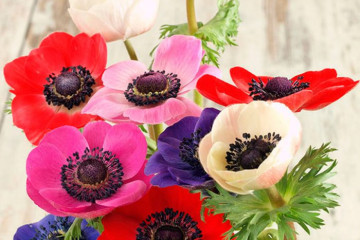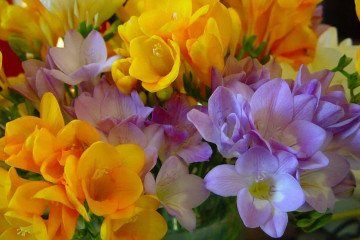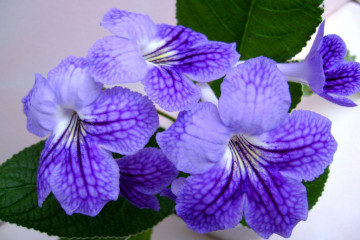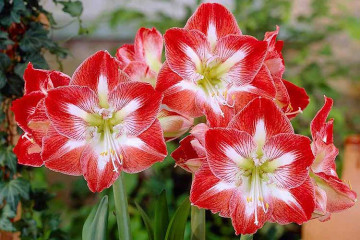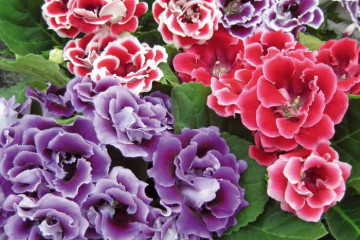Achimenesa home flowers - care and cultivation
Content:
The delicate flowers of Achimenes are favorite and beautiful plants for home growing. These compact bushes, abundantly covered with small amazing flowers, decorate terraces, balconies, rooms, creating beautiful compositions and a riot of colors.
Description of achimenes
Achimenes (achimene) is a herbaceous perennial of the Gesneriev family. The plant is low - up to 30 cm in height, with fleshy shoots. Leaves are glossy, oblong, dark green or purple with pronounced veins and jagged edges. The culture is characterized by amicable flowering, the flowers of achimenes are small, shaped like gramophones. The root system develops by rhizomes - the so-called tubers covered with scales.
Common varieties
The genus Achimenes is represented by 50 species and a huge number of varieties. Some of them grow in the wild, most of the ornamental plants are bred by selective breeding.
In flower shops, several types of flowers are most common, which have proven themselves well in Russian climatic conditions:
- Long-flowered. Shrub plant with several shoots and large flowers up to 6.5 cm in length, purple and blue tones. Popular varieties:
- Chiapas - lavender flowers;
- Juaregia is a white flower with a purple core and veins.
- Fringed. An interesting achimenes flower with an unusual fringed shape of petals of white or pale pink color.
- Hybrid. The variety was bred as a result of crossing several species. It is characterized by abundant flowering and color. Representatives:
- Rose Pink - bright pink, crimson flowers.
- Blue - deep blue, azure color of petals, yellow center.
- Yellow beauty - tubular flowers with yellow or light yellow petals and a terracotta base.
- Large-flowered. The largest species - the plant reaches 60 cm in height, flowers grow up to 6 cm in diameter and up to 10 cm in length. The leaves are purple or dark green, the flowers are red or purple.
Ahimenes is a tropical plant native to Central and South America. Therefore, the culture needs warmth and humidity.
Features of care for Ahimenes
Achimenes' care and cultivation are rather painstaking processes that require patience, careful handling and certain knowledge. The plant loves warmth, constant temperature. In Russia, it is grown as an indoor flower. For the summer period, it becomes possible to plant a bush in open ground or move it to a balcony.
Temperature and lighting
The first step in properly caring for Achimenes is choosing a place for the plant in your home. The flower loves the sun, develops well in bright, but diffused lighting. Direct sunlight can burn the leaves. Experienced growers claim that most Achimenes varieties gradually adapt to the sun. In the shade, the plant loses its decorative effect, increases its green mass and does not bloom.
Ahimenes is a tropical culture, loves warmth, does not tolerate temperature changes, drafts. Comfortable conditions for a flower during growth and flowering - a temperature of 22-24 degrees. During the rest period, the optimum temperature is 10-14 degrees.
Watering and spraying
Ahimenes need moist air, watering. At the same time, it is not recommended to spray the leaves - the pubescent surface accumulates moisture, and there is a risk of diseases. A good solution is to place the flower near a pond, aquarium, or in the kitchen. It is necessary to water the plant often, but not abundantly, with warm, settled water.
Excess liquid should drain freely, a pallet with expanded clay or fine gravel is placed under the pot (it must be moistened).
During the dormant period, watering is reduced - it is enough to moisten the soil around the plant once or twice a week or pour water into the pan.
Growing soil
An important factor in the processes of planting and caring for Achimenes is the choice of soil. It is recommended to grow the culture in a special mixture for Saintpaulias (violets). It contains peat, vermiculite and perlite. You can prepare a suitable soil yourself by mixing peat, sand and turf soil. Large vermiculite, expanded clay or gravel are used as drainage.
Top dressing and fertilizers
How to feed the Ahimenes? The question is interesting, but not difficult - the culture does not need special feeding. Fertilizers for Achimenes can be applied during the growing season and flowering. As a top dressing, universal mineral complexes are used for flowering ornamental plants. They are used in small quantities with each watering. In autumn and spring, organic matter is introduced: humus or ash.
Pinching
Experienced flower growers advise pinching the Achimenes - it will delay the flowering of the plant for about two weeks, but will enable the flower to grow stronger, form lateral pagons, and lay strong flower buds. You can start pinching achimenes at an early stage of growth, when the plant reaches a height of several centimeters. The outermost kidney is removed with scissors or simply broken off. Pinching of miniature varieties is carried out twice a season, ampelous and larger bushes can be pinched up to seven times. The process stops after the first bud appears.
Flowering culture
Achimenes are distinguished by the shape of the pagon and the flowers. There are erect bushes (strong pagons, growing vertically) and ampelous (flexible stems, hanging down).
Depending on how achimenes blooms, flower shapes are divided:
- Tubular corollas - thunderophone-like;
- Cup-like.
Flower types:
- Regular;
- Terry.
Types of Achimenes, depending on the size of the flower:
- Small-flowered (up to 3 cm);
- Mid-flowered (up to 5 cm);
- Large-flowered (more than 5 cm).
The color palette of the culture is vast and interesting. The base color is purple, and Achimenes are also presented in white, yellow, pink, red, blue, lilac and other colors.
The flowering period of the plant is from early summer to mid-autumn.
Sometimes Achimenes do not bloom without visible factors. There are several reasons why this happens:
- Diseases or pests - the plant weakens, is not able to fully develop.
- Transfer. The period of culture adaptation is quite long, the flower simply did not have time to prepare for flowering.
- Lack of trace elements (magnesium, manganese and boron).It is necessary to treat the plant with products with a high content of these elements.
You can increase the abundance of flowering with the preparations "Bud", "Blossom".
Reproduction at home
Reproduction of Achimenes is carried out in several ways:
- Seeds. A painstaking and lengthy process, the most difficult option for breeding a culture. Ripe seeds are sown in February, mixed with sand. It is not necessary to sprinkle with soil - the grains are very small. The surface is sprayed with warm water, the container is covered with a film. Seedlings appear in 10-14 days. Fortified young shoots must be transplanted into separate pots.
- Cuttings. A simple yet effective way. A healthy adult twig is divided into three to four roots, with two or more internodes. The sections are processed with activated carbon. The cuttings are dried, planted in the ground. If rooting was successful, then after 2-3 weeks the seedlings can be transplanted into a pot.
- Leaves. It is not difficult to carry out such rooting, but flowering occurs only the next season. The leaves are broken off or cut off and planted in the ground. For faster germination, the material can be placed in water with a rooting stimulant for several days. Several pieces of leaves are planted in one pot - the bush will be more lush.
- Stolons. An effective method to grow achimenes. Stolons are daughter shoots of roots (rhizome). It is necessary to cut off the stolons from the adult rhizome and plant it in the ground. With proper care, the young flower will grow and bloom intensively.
- Rhizomes of the Ahimenes. The easiest and most effective way to plant a plant. The adult plant is removed from the pot, the root is carefully cut into several pieces. The sections are processed with activated carbon. The scales are planted in a prepared substrate. Young shoots are dived and placed in a separate container.
Heating the bottom of the pot can speed up the rooting process: the container is placed on warm bricks, stones, a water bath.
Transfer
When buying Achimenes, you should remember that you need to transplant the plant in late winter - early spring. Later transplanting requires a long adaptation period, leading to a lack of flowering.
Before planting a bush, it is necessary to remove the rhizomes from the pot, inspect, remove damaged parts. If the rhizome is very large, it is desirable to divide it. The old soil is depleted, you need to prepare a new, fresh substrate. Drainage is laid out at the bottom of the pot, soil is poured with the addition of charcoal, a rhizome is planted, and compacted well.
Problems in growing Achimenes
In the process of caring for the achimenes flower at home, certain difficulties arise:
- The plant sheds buds and leaves. Hot dry air can provoke such a phenomenon. If the leaves just wither, the cause is often insufficient moisture.
- The tips of the leaves dry. Perhaps the flower is exposed to direct sunlight for a long period. Cold water on the plant can cause mottling.
- The flower grows slowly. The reasons are often poor lighting, drafts, heavy soil.
Achimenes diseases are serious problems in crop cultivation. The plant can be susceptible to fungal diseases. It is necessary to remove damaged areas of pagon and leaves, treat the soil with a fungicide.
When aphids and spider mites appear, insecticides are used.
Transplanting and growing outdoors
It is possible to grow achimenes on the street under the condition of stable heat: the air temperature should not fall below 20 degrees. Flower pots are placed on a balcony or terrace.It is very important to choose the right place: it is worth avoiding rain, direct rays of the sun. The ideal place is quiet, protected from wind, drafts, rain. When it gets cold or at night, it is advisable to bring the flower into the house.
Ahimenes are beautiful delicate flowers that do not leave anyone indifferent. They are quite delicate and demanding to care for. Having studied some of the nuances of growing, you can make sure that caring for this plant, watching its development is a pleasure.
Video
